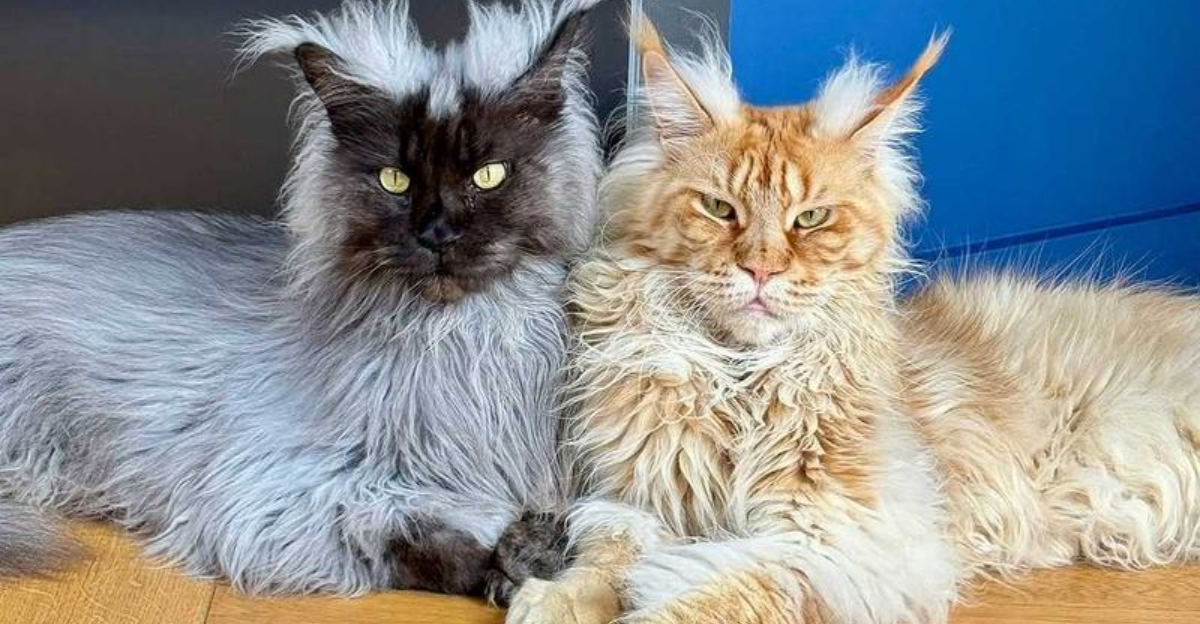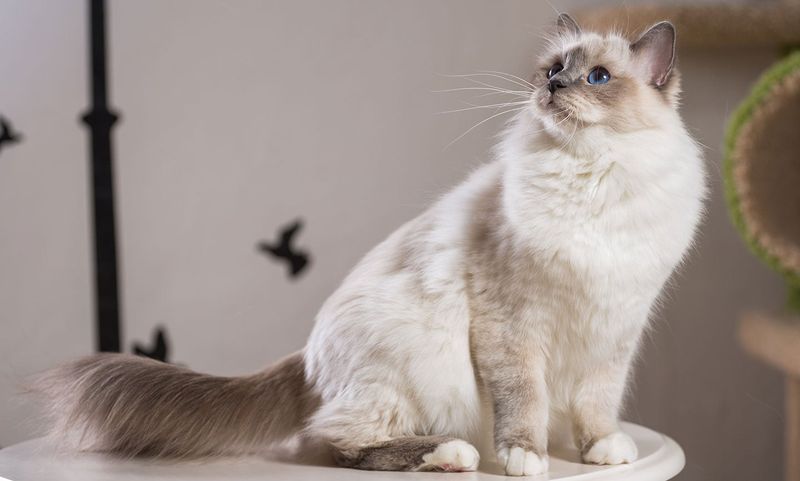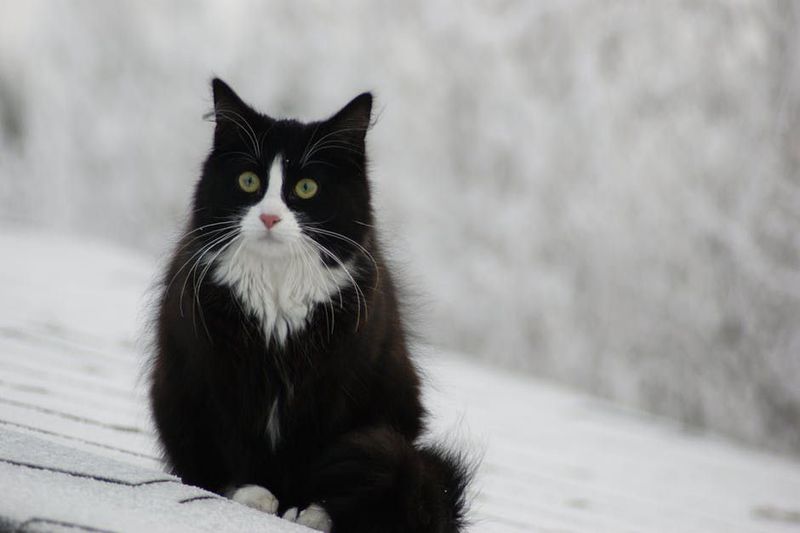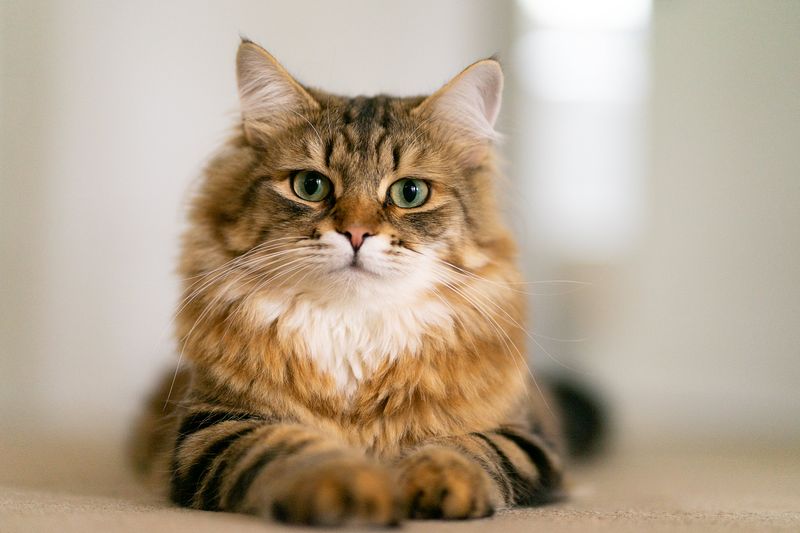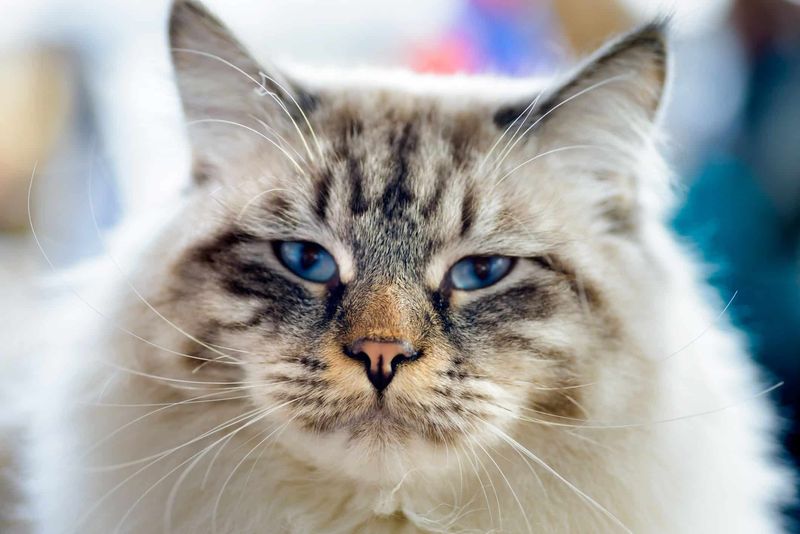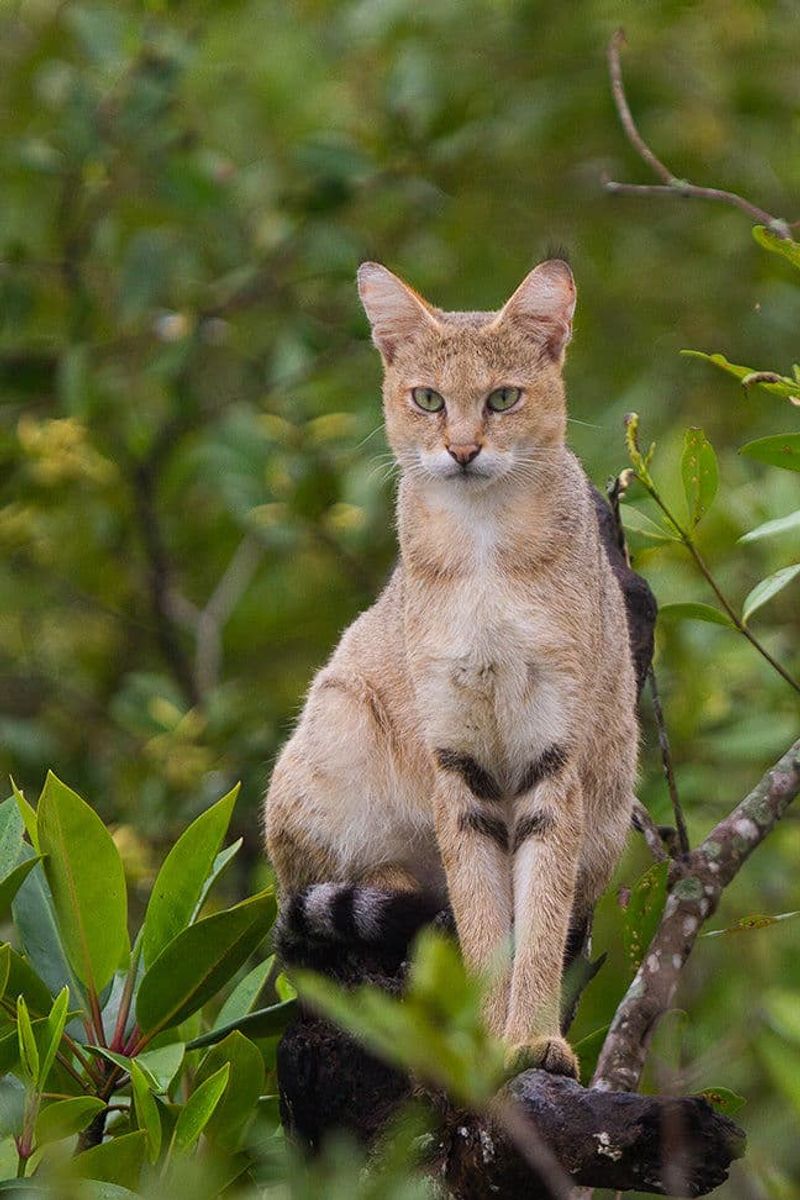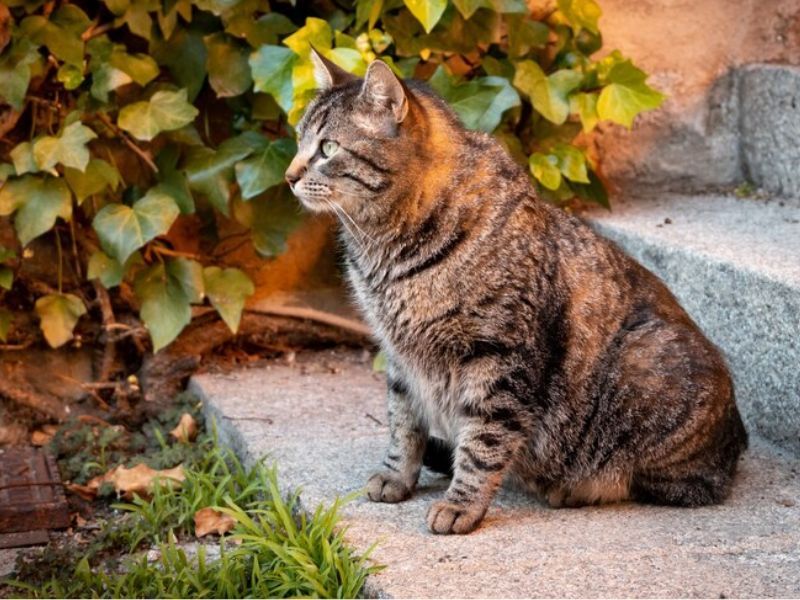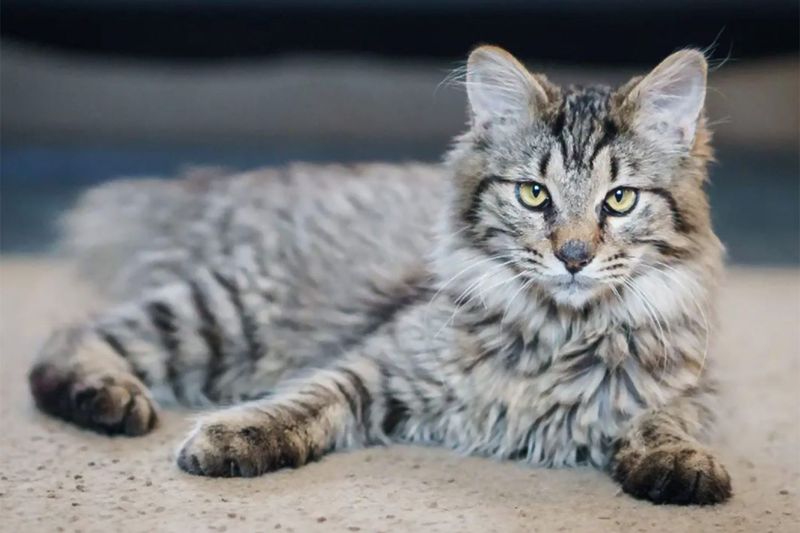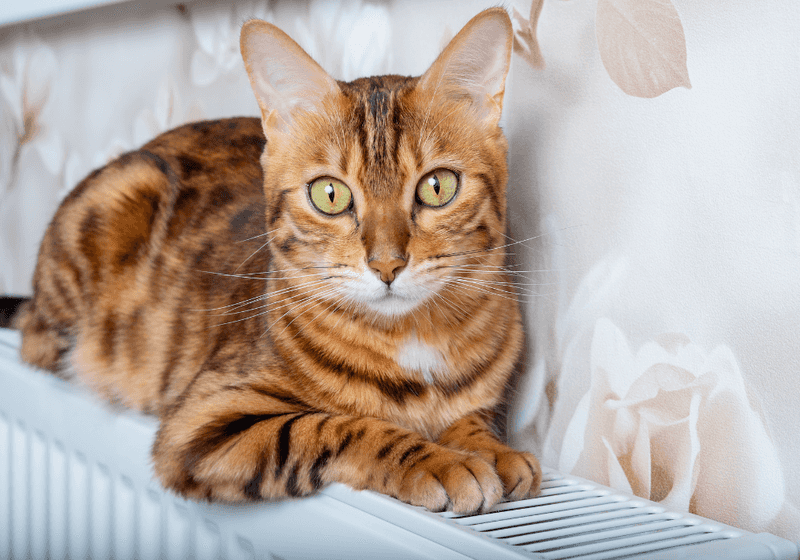📖 Table of Content:
Cat lovers often admire the majestic presence of big wild cats and dream of having a similar companion at home. Several domestic cat breeds grow to impressive sizes, uniquely combining strength and affection. These larger-than-average cats bring both warmth and personality, making them fascinating additions to any household.
Unlike their wild relatives, these supersized felines adapt well to family life, offering plenty of cuddles alongside their striking appearance. Their size does not diminish their playful and loving nature, often making them gentle giants in the home. Many owners find that these cats become loyal and entertaining members of the family.
When these magnificent mousers settle in for a nap, they often take up more space than expected, turning laps into cozy thrones. Their commanding size can be both amusing and endearing, creating a presence that’s hard to ignore. Discovering these gentle giants reveals a side of domestic cats that blends grandeur with heart.
1. Ragdoll
True to their name, Ragdolls go limp when picked up, relaxing completely in your arms. These blue-eyed beauties can reach 20 pounds, with males significantly larger than females. Their semi-long fur comes in pointed patterns with minimal shedding despite their fluffy appearance.
Originally developed in California in the 1960s, Ragdolls mature slowly over four years. They’re famously docile and seek human company constantly.
Unlike many cats, Ragdolls rarely climb high places, preferring to stay at floor level where they can follow their people from room to room. Their tendency to greet owners at the door has earned them the nickname ‘puppy cats.’
2. Savannah
Half wild and wholly stunning, Savannah cats result from crossing domestic cats with African Servals. F1 Savannahs (first generation) can weigh 25 pounds and stand as tall as medium-sized dogs. Their spotted coats and long legs give away their exotic heritage.
Energetic doesn’t begin to describe these athletic jumpers—they can leap 8 feet high from a standing position! Many Savannahs enjoy water and can be taught to walk on leashes.
Lower generation Savannahs (F4 and beyond) make more manageable pets while retaining their distinctive appearance. Be aware that some states restrict ownership of early-generation Savannahs due to their wild ancestry.
3. Norwegian Forest Cat
Straight from Norse mythology, Norwegian Forest Cats (or ‘Wegies’) evolved to survive Scandinavian winters with water-resistant double coats and sturdy bodies weighing up to 22 pounds. Their almond-shaped eyes and triangular heads give them a dignified expression.
These natural climbers have strong claws that allow them to scale rock faces and trees headfirst. Legend claims they pulled the goddess Freya’s chariot and were beloved by Vikings.
Despite their rugged appearance, Wegies are patient and friendly family cats. Their thick fur requires weekly brushing, with extra attention during spring shedding season when they lose their heavy winter undercoats.
4. Siberian
Russia’s national cat, the Siberian, combines strength with agility in a package that can reach 20 pounds of solid muscle. Their triple-layered coat evolved to withstand sub-zero temperatures, creating a magnificent mane around their neck.
Surprisingly, many people with cat allergies can tolerate Siberians because they produce less of the Fel d1 protein that triggers reactions. These cats are powerful jumpers and excellent problem-solvers who enjoy interactive puzzles.
Siberians are late bloomers, taking up to five years to reach full size. Their history dates back at least 1,000 years in Russia, where they were celebrated in fairy tales and considered good luck for families.
5. Ragamuffin
Related to Ragdolls but recognized as a separate breed, Ragamuffins are substantial cats weighing 15-20 pounds, with males on the heavier side. Their plush, rabbit-like fur comes in virtually every color and pattern, not just pointed varieties.
These gentle giants remain kitten-like well into adulthood, maintaining playful attitudes throughout their long lives—many reach 18 years or more. Their sturdy bodies feel surprisingly heavy when lifted, like picking up a sack of flour with fur.
Ragamuffins bond deeply with their families and greet everyone with purrs. Their patient temperament makes them excellent companions for children, often tolerating dress-up games and stroller rides that would send other cats running.
6. Chausie
Born from crosses between domestic cats and jungle cats, Chausies combine wild looks with housecat temperaments. These athletic felines typically weigh 15-25 pounds and stand tall on long, muscular legs that allow them to make incredible jumps.
Their short, low-maintenance coats come primarily in three colors: solid black, brown-ticked tabby, or grizzled tabby. Early generation Chausies need experienced owners, but later generations make adaptable pets.
High energy levels mean Chausies require daily playtime and vertical territory to climb. Their intelligence shines through their ability to learn tricks and solve problems—many can open doors and cabinets with ease.
7. Maine Coon
Nicknamed the ‘gentle giants’ of the cat world, Maine Coons can weigh up to 25 pounds and stretch over 40 inches from nose to tail tip. Their shaggy coats and tufted ears give them a wild appearance, but they’re known for being sweet-natured and playful.
These American natives have six-toed feet that work like snowshoes in winter. Despite their size, they’re surprisingly agile climbers and hunters.
Maine Coons develop slowly, not reaching full size until 3-5 years old. Their distinctive chirping trill and dog-like behaviors—following owners around and even playing fetch—make them endearing companions.
8. British Shorthair
Famously portrayed as the Cheshire Cat in Alice in Wonderland, British Shorthairs are solid, powerful cats weighing up to 17 pounds. Their dense, plush coats—especially in the classic blue-gray color—feel like luxurious velvet and require minimal grooming.
These cats are built like tanks with broad chests and strong legs. Their round faces with chubby cheeks and copper eyes create an expression of perpetual smiling contentment.
British Shorthairs are independent but affectionate, preferring to sit beside you rather than on your lap. They typically live 14-20 years, maintaining their dignified demeanor throughout life while occasionally breaking character for sudden bursts of playfulness.
9. Pixie-Bob
Often mistaken for Bobcat hybrids (though they’re fully domestic), Pixie-Bobs can weigh up to 18 pounds and sport distinctive bobbed tails. Their spotted brown tabby coats, tufted ears, and heavy jowls contribute to their wild appearance.
Unusually for cats, many Pixie-Bobs enjoy walking on leashes and playing fetch. Some even take to water without complaint! Their polydactyl paws (extra toes) enhance their already substantial size.
Despite their rugged looks, Pixie-Bobs are known for dog-like devotion to their families. They communicate with chirps and chitters rather than traditional meows, creating a unique language that owners come to understand over time.
10. American Bobtail
American Bobtails combine the wild look of a bobcat with the temperament of a loving house cat. Males typically reach 15-16 pounds with sturdy, athletic bodies and distinctive shortened tails that vary from 1-4 inches long.
Their shaggy, double coats come in virtually any color or pattern and require regular brushing to prevent mats. These cats are exceptionally good travelers, often comfortable in cars, hotels, and new environments.
Military families particularly value American Bobtails as therapy cats—they sense emotional needs and offer comfort during stressful times. Their intelligence makes them adept at escaping enclosures, earning them the nickname ‘Houdini cats’ among breeders.
11. Bengal
Bengals bring the wild into your living room with their spectacular spotted or marbled coats that actually glitter in sunlight due to a unique hollow hair structure. Males can reach 15 pounds of pure muscle with no fat to spare.
These active cats need vertical territory and interactive play. Their Asian Leopard Cat ancestry gives them a distinctive love of water—don’t be surprised to find yours playing in sinks or joining you in the shower!
Bengals possess remarkable intelligence that requires stimulation through puzzle toys and training. Their distinctive vocalizations range from typical meows to unique chirps, trills, and growls that sound like conversations.
12. Turkish Van
Swimming cats exist! Turkish Vans, weighing up to 20 pounds, are natural swimmers with water-resistant coats that dry quickly. Their distinctive white bodies with colored head and tail markings create what’s called the ‘van pattern,’ named after this ancient breed.
Originating around Turkey’s Lake Van, these cats have been documented for over 1,000 years. Their cashmere-like coats lack an undercoat, making them surprisingly low-maintenance despite their fluffy appearance.
Late bloomers, Turkish Vans don’t reach full size until 3-5 years old. Their powerful hind legs allow for spectacular jumps, and they’re known for finding the highest perch in any room—refrigerator tops are particular favorites.
13. Highlander
One of the newer large breeds, Highlanders combine the size of Maine Coons with the curled ears of American Curls and bobbed tails of Manx cats. Males often exceed 15 pounds with rectangular, muscular bodies designed for power.
Their most distinctive features are naturally curled ears and short, bobbed tails. Many Highlanders are polydactyl with extra toes that make their already large paws look like mittens.
Formerly called Highland Lynx, these cats have playful personalities that persist into old age. They’re renowned for their fascination with water—owners often find them splashing in toilets, sinks, or bathtubs. Their relaxed attitude makes them adaptable to homes with children and other pets.
